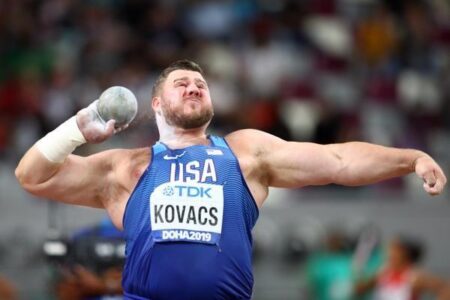A recent systematic review published on ResearchGate sheds new light on the impact of strength training on repeated sprint ability (RSA) in team sports athletes. This comprehensive analysis dives into how targeted strength programs can influence players’ capacity to perform high-intensity sprints multiple times during a game-a critical factor in sports like soccer, basketball, and rugby. With growing emphasis on optimizing athletic performance, the findings offer valuable insights for coaches, trainers, and athletes striving to gain a competitive edge through scientifically backed training methods.
Impact of Strength Training on Sprint Recovery and Performance in Team Sports
Strength training has increasingly been recognized as a crucial component in enhancing sprint recovery and overall performance for athletes engaged in team sports. By targeting muscular strength and power, athletes are better equipped to sustain high-intensity efforts across multiple sprints, effectively delaying fatigue. The development of neuromuscular adaptations through resistance exercises contributes significantly to improved force production during maximal sprints, enabling quicker acceleration and superior running mechanics which translate directly to better on-field outcomes.
Key mechanisms through which strength training impacts sprint recovery include improved phosphocreatine resynthesis, enhanced motor unit recruitment, and greater tolerance to metabolic stress. Teams incorporating structured strength programs have reported benefits such as:
- Reduced sprint decrement in repeated sprint sets
- Faster recovery intervals between high-intensity efforts
- Increased muscular endurance of sprint-prone muscle groups
| Effect | Performance Outcome |
|---|---|
| Muscular Strength Gain | 12% Improvement in Sprint Speed |
| Enhanced Recovery | 25% Reduction in Fatigue Rate |
| Neuromuscular Efficiency | 18% Increase in Sprint Consistency |
Key Mechanisms Behind Improved Repeated Sprint Ability Through Resistance Workouts
Resistance training plays a pivotal role in enhancing repeated sprint ability by targeting specific muscle and neurological adaptations. One of the primary mechanisms is the improvement in muscular strength and power, which allows athletes to generate greater force during each sprint. This lead to more efficient acceleration and deceleration phases. Additionally, resistance workouts contribute to increased muscle fiber recruitment, particularly of type II fibers, which are essential for short bursts of high-intensity activity. Enhanced neuromuscular coordination developed through such training helps in faster motor unit activation and better synchronization, enabling athletes to sustain sprint performance across multiple bouts with reduced fatigue.
Moreover, resistance exercises improve metabolic factors critical for repeated sprints. The elevation in phosphocreatine resynthesis capacity and improved buffering of metabolic by-products allow muscles to recover more rapidly between sprints. These adaptations reduce performance decrements typical in intermittent high-intensity sports. The table below summarizes key physiological changes observed after structured resistance training programs:
| Physiological Adaptation | Effect on Sprint Performance |
|---|---|
| Increased maximal strength | More explosive starts and powerful strides |
| Enhanced motor unit recruitment | Improved sprint technique and efficiency |
| Improved energy system recovery | Reduced fatigue, better repeat sprint ability |
| Greater muscle fiber hypertrophy (Type II) | Higher anaerobic output during sprints |
- Neuromuscular adaptations: Critical for rapid force production and improved movement economy.
- Metabolic enhancements: Support sustained sprinting through faster recovery.
- Muscular improvements: Provide the mechanical foundation for stronger and quicker outputs.
Practical Strength Training Guidelines to Boost Sprint Repetition in Competitive Athletes
To effectively enhance sprint repetition among competitive athletes, implementing structured strength training programs is paramount. Research shows that incorporating explosive lower-body exercises such as squats, deadlifts, and plyometric drills facilitates muscular power and neuromuscular coordination, directly improving sprint performance under fatigue. Coaches are advised to emphasize high-intensity, low-repetition sets to target fast-twitch muscle fibers, which play a critical role in repeated sprint ability. Additionally, recovery periods should be strategically programmed, balancing load with adequate rest to prevent overtraining and enhance muscle adaptation.
Practical application also involves diversifying training stimuli. This includes integrating unilateral movements, core stabilization exercises, and eccentric strength work to support sprint biomechanics and injury prevention. Below is an example of a weekly strength training template tailored for sprint repetition enhancement:
| Day | Focus | Key Exercises | Sets & Reps |
|---|---|---|---|
| Monday | Lower Body Power | Back Squat, Jump Squats | 4Ă—5 at 85% 1RM |
| Wednesday | Eccentric Strength | Romanian Deadlift, Nordic Hamstring | 3Ă—6 controlled tempo |
| Friday | Core & Stability | Planks, Single-leg Deadlifts | 3Ă—30 sec holds / 3Ă—8 reps |
- Prioritize explosive compound movements: Exercises like squats and deadlifts activate multiple muscle groups and build foundational strength.
- Focus on proper technique and controlled eccentric phases: This reduces injury risk and enhances muscle strength and tendon resilience.
- Incorporate sufficient recovery: Allow muscles to recover by scheduling rest days and monitoring training intensity.
- Customize training loads: Adjust sets, reps, and intensity based on athlete’s condition and progression.
- Integrate core stability work: Enhances posture and sprint biomechanics, supporting faster and more efficient movement.
By following this structured and evidence-based strength training approach, competitive athletes can improve their sprint repetition capacity, ultimately translating into enhanced performance during high-intensity competitions.
Key Takeaways
In summary, this systematic review sheds new light on the positive impact of strength training on repeated sprint ability among team sports players. By consolidating findings from multiple studies, it confirms that targeted strength programs can enhance players’ explosive power and endurance during high-intensity bouts typical of competitive match play. As teams strive for that competitive edge, incorporating strength training into conditioning regimens appears increasingly vital. Future research will hopefully refine these insights further, tailoring approaches to specific sports and athlete profiles. For coaches and athletes alike, the evidence underscores strength training’s growing importance in optimizing performance on the field.





